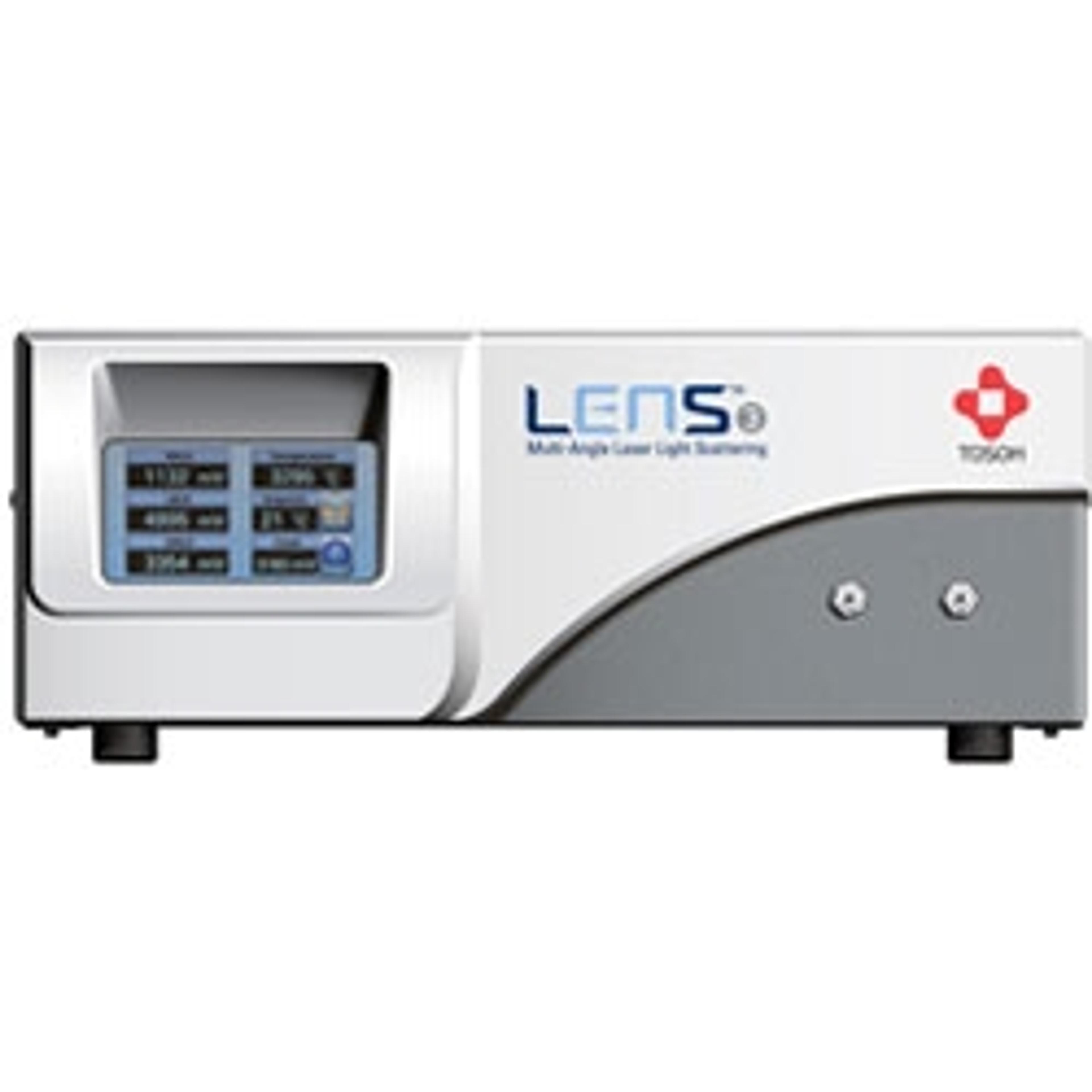Industry First as Radius of Gyration Determined on Macromolecules Below 10 nm with Tosoh Bioscience
26 Mar 2019Tosoh Bioscience LLC is proud to announce the introduction of its LenS3 Multi-Angle Light Scattering (MALS) detector, offering a revolutionary approach for the measurement of molecular weight (MW) and radius of gyration (Rg) of synthetic polymers, polysaccharides, proteins, and biopolymers. A novel optical design, a unique cell-block assembly, and a new calculation methodology make the LenS3 MALS detector the first ground-breaking innovation in the light scattering technology arena in decades!
Featuring a patent pending cell geometry and a lower wavelength laser (at 514 nm), the LenS3 MALS detector allows direct measurement of molecular weight and provides best-in-class sensitivity. In addition, with an improved normalization process and a new method for utilizing the angular dependence, the determination of radius of gyration of smaller macromolecules below 10 nm in gyration size, Rg, is now possible for the first time in history!
Light scattering of macromolecules in solution has seen increasing interest over the past decades from scientists studying polymers and proteins. HPLC-SEC systems, coupled with online light scattering detection, has proven to be a powerful tool for measuring absolute molecular weight and the gyration size of the macromolecules. The technique is also essential in identification and quantification of aggregation levels in proteins and monoclonal antibodies and in studying their conformation in various solution conditions.
The LenS3 MALS detector is driven by SECview™ software, capable of GPC system/hardware control, multi-channel data acquisition, data processing and analysis. Totally focused around enhancing the user-interface experience, SECview is a welcoming fresh perspective that streamlines the complex calculations required by the advanced detectors and is the only GPC/SEC data processing module today that performs analysis of sample-of-interest using multiple calibration methods simultaneously.

